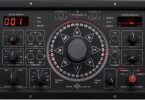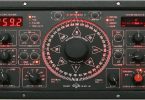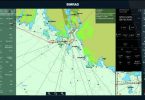Longitude by Chronometer
This method is also used to determine the longitude of the observer. The position line runs through the position at DR latitude and observed longitude in a direction perpendicular to the azimuth of the celestial body from the observer.
Intercept
Since it is impractical to draw the large circle of a position circle on the chart, only the part of it in the vicinity of the ship that is perpendicular to the bearing of the body from the ship is drawn. When observing a celestial body, we can obtain its azimuth and altitude. The azimuth is the bearing of the body and the altitude of the body, giving us the zenith distance. As long as the altitude is corrected, the observed zenith distance is the true zenith distance, which is called Observed Zenith Distance or True Zenith Distance. With the D.R. position of the observer at the time of observing, the altitude can be calculated to obtain the zenith distance, which is called Calculated Zenith Distance. The difference between the observer or true zenith distance and the calculated zenith distance is the intercept.
If the true zenith distance is smaller than the calculated zenith distance, then the observer is nearer toward the geographical position of the celestial body compared with the DR position, and the intercept is called TOWARD.
If the true zenith distance is greater than calculated zenith distance, then the observer is further away from the geographical position of the celestial body compared with the DR position, and the intercept is called AWAY.






GOOD DESCRIPTIONS OF ALL TOPICS!!
VERY GOOD EFFORT